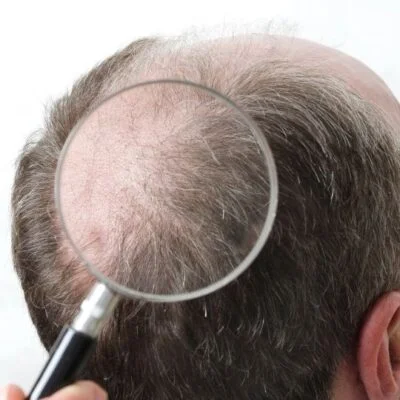Hair transplant is a surgical procedure performed to address hair loss or thinning hair. It involves taking hair follicles from a donor area, usually the back or sides of the scalp, and transplanting them to areas where hair growth is desired. This procedure is commonly used to treat androgenetic alopecia (male or female pattern baldness) and restore hair density.
The two primary methods of hair transplant are follicular unit transplantation (FUT) and follicular unit extraction (FUE). In FUT, a strip of skin containing hair follicles is harvested from the donor area, and the donor site is sutured closed. The strip is then dissected into individual grafts, which are transplanted into the recipient area. FUE, on the other hand, involves individually extracting hair follicles from the donor area using a specialized punch tool. These follicles are then transplanted into the recipient site.
The transplanted hair follicles continue to grow naturally in their new location. Over time, the transplanted hair blends with the existing hair, resulting in a more natural appearance. Hair transplant procedures are typically performed under local anesthesia, and patients can usually return home the same day.
After the procedure, it is normal to experience some temporary redness, swelling, and minor discomfort in the recipient area. The transplanted hair initially sheds, but new hair growth typically begins within a few months. It takes several months for the transplanted hair to fully mature and achieve the desired results.
Hair transplant can significantly improve the appearance and self-confidence of individuals experiencing hair loss. However, it’s important to consult with a qualified hair transplant surgeon to determine if you are a suitable candidate and to discuss the potential risks, benefits, and expectations of the procedure.
How is hair transplant done?
Hair transplant is a surgical procedure that is typically performed in a specialized clinic or surgical center. The following steps provide an overview of how a hair transplant is generally done:
- Consultation: The process begins with a consultation with a hair transplant surgeon. During this initial meeting, the surgeon examines the patient’s scalp, discusses their hair loss pattern, and evaluates their suitability for a hair transplant. The surgeon also discusses the goals, expectations, and potential outcomes of the procedure.
- Preparation: On the day of the surgery, the patient’s hair is trimmed short to facilitate the procedure. The surgeon and the medical team prepare the donor and recipient areas of the scalp for the transplantation process.
- Anesthesia: Local anesthesia is administered to numb both the donor and recipient areas. This ensures that the patient remains comfortable throughout the procedure. Sedation may also be provided to help the patient relax.
- Donor hair extraction: In the follicular unit transplantation (FUT) method, a strip of scalp containing hair follicles is surgically removed from the donor area, typically the back or sides of the scalp. The donor area is then sutured or stapled closed. In the follicular unit extraction (FUE) method, individual hair follicles are extracted directly from the donor area using a specialized punch tool.
- Graft preparation: The harvested hair follicles are carefully dissected under a microscope to create individual grafts. Each graft typically contains one to four hair follicles.
- Recipient site creation: The surgeon creates tiny incisions or recipient sites in the bald or thinning areas of the scalp. These sites are strategically placed to ensure natural-looking hair growth.
- Graft placement: The prepared grafts are delicately placed into the recipient sites, taking into consideration the angle, direction, and density required for a natural appearance. The surgeon and the medical team work meticulously to ensure proper graft placement.
- Postoperative care: After the procedure, the patient is given postoperative instructions, including guidelines for wound care, medication usage, and activities to avoid. The patient may be provided with a special bandage or dressing to protect the donor and recipient areas.
Following the hair transplant, patients can expect some mild swelling, redness, and scabbing in the treated areas. The transplanted hair usually sheds within a few weeks, and new hair growth begins within a few months. It can take several months for the transplanted hair to grow and achieve the desired results.
It’s important to note that the specifics of the hair transplant procedure may vary based on the surgeon’s technique and the patient’s individual needs. It is recommended to consult with a qualified hair transplant surgeon to understand the specific approach and expectations for the surgery.
What should be considered after hair transplant?
After a hair transplant procedure, there are several important considerations for a successful recovery and optimal results:
- Follow postoperative instructions: It is crucial to carefully follow the postoperative instructions provided by your hair transplant surgeon. This may include information about wound care, medication usage, and activities to avoid. Adhering to these instructions is essential for proper healing and minimizing complications.
- Protect the grafts: The transplanted grafts are delicate during the initial healing phase. It’s important to avoid touching, rubbing, or scratching the grafts to prevent dislodgement. Be gentle when washing your hair and follow your surgeon’s instructions for shampooing and drying.
- Avoid strenuous activities: Engaging in strenuous physical activities, such as heavy exercise or lifting, should be avoided during the early stages of recovery. Excessive sweating and increased blood flow to the scalp can affect the healing process. Consult your surgeon for specific guidelines on when it is safe to resume normal activities.
- Take prescribed medications: Your surgeon may prescribe medications to promote healing, prevent infection, or manage discomfort. Take these medications as directed and notify your surgeon if you experience any adverse effects.
- Protect from sun exposure: Protect your scalp from direct sun exposure by wearing a hat or using sunscreen with a high SPF. Excessive sun exposure can damage the healing skin and cause pigmentation changes.
- Be patient: Hair transplant results take time to fully manifest. It is normal for the transplanted hair to shed within a few weeks after the procedure. New hair growth typically begins within a few months, and it may take up to a year for the final results to be visible. Be patient and maintain realistic expectations.
- Attend follow-up appointments: Regular follow-up appointments with your surgeon are essential. These appointments allow your surgeon to monitor your progress, assess the graft survival, and address any concerns or questions you may have.
By following these considerations and maintaining open communication with your surgeon, you can promote proper healing and maximize the success of your hair transplant procedure.




